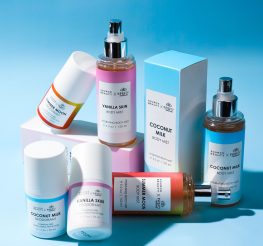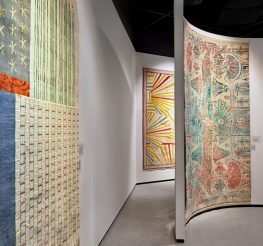-
S-139 El Sahara District, Designopolis
-
Galleries
-
-
11AM-7PM
Tanya El Kashef
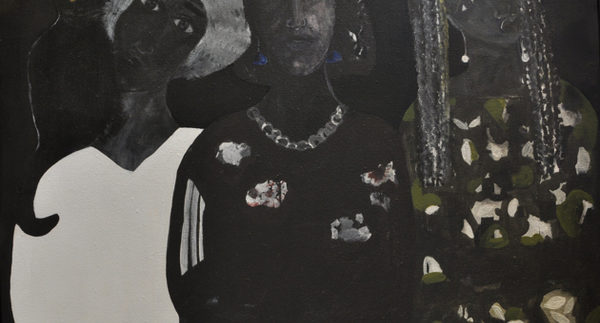
Filling up the two floors of the gallery, the first element that stands out is her use of rich and robust colours, though not particularly bright, they are dense and painted on thickly. She uses them generously in some pieces, creating big solid expanses of colour. Even those pieces with more neutral shades, and even a lot of black, maintain this vibrancy somehow.
‘Roh’ has three women with one of them carrying a black cat on their shoulder. Although the figures blend into their black background, having painted black portions themselves, and the cat has only its eyes popping out in yellow, the dark hue’s texture and the manner with which it was applied to the canvas, leave it practically shining.
Every piece has a female figure and some of them are depicted with
tilted heads. ‘Alamet Istifham’ (Exclamation mark) has seven heads with
different skin tones and hair colours, with turned heads; all of them
carry expressions of bewilderment and melancholy mixed into one – as do
most of her subjects. It is the most endearing aspect of her work.
‘El Ganna Ley Wahdy’ (Heaven is for me alone) is essentially monochrome but requests the same attention as any of its more colourful counterparts. Maybe it’s because it’s so large and looming, depicting a monaqaba with words messily written around her in both English and Arabic saying: ‘Am gonna be in the heaven and you will be in the hell’ – the Arabic version has the slight addition of ‘el nar’ repeated three times. The point of this piece literally speaks for itself.
There is a strong African influence in Kamel’s work, the dark skin of the subjects as well as the colour palette of some pieces are undeniably of this theme. ‘Freedom’ brought Pablo Picasso to mind, likening it to his work from the African-influenced period. The subject is seen on a bicycle, warped in form; exaggerated and disproportionate. The colours too resemble those of the Spanish artist, being more neutral in tone and mixed with a dirty quality.
The exhibition as whole carries work from as far back as 2004 until today and on the upper level Kamel’s different styles become apparent. Here there are more abstract paintings, with less obvious subjects and more sinister forms that could resemble serpents and crocodiles.
The collection, as mentioned, is very personal; it’s like a story book of the artist’s past. ‘Close’ has two bodies huddled together, their faces turned away, leaving us wondering if this is a childhood memory that she paints. The same goes for ‘Embrace’, which shows a deep embrace between a girl and a boy, as well as the more mature ‘Best Friends’ that has a man and a woman standing up tall, looking straight ahead.
Kamel’s work is genuine and simply heartfelt, however the true meaning behind these pieces we’ll never know, the actual memories we’ll never be able to place, but perhaps the act of wondering, of using our imagination, is in fact part of the whole experience.
Write your review
recommended
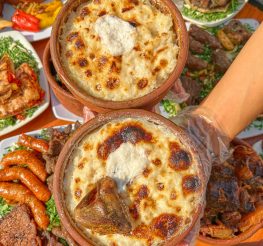 Restaurants
Restaurants
Where to Eat the Best Egyptian Meals: Top Restaurants for Egyptian Cuisine
Bebo Egyptian food +4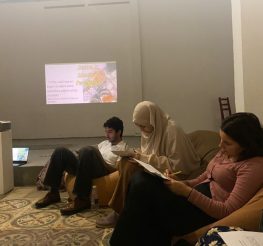 Arts & Culture
Arts & Culture


